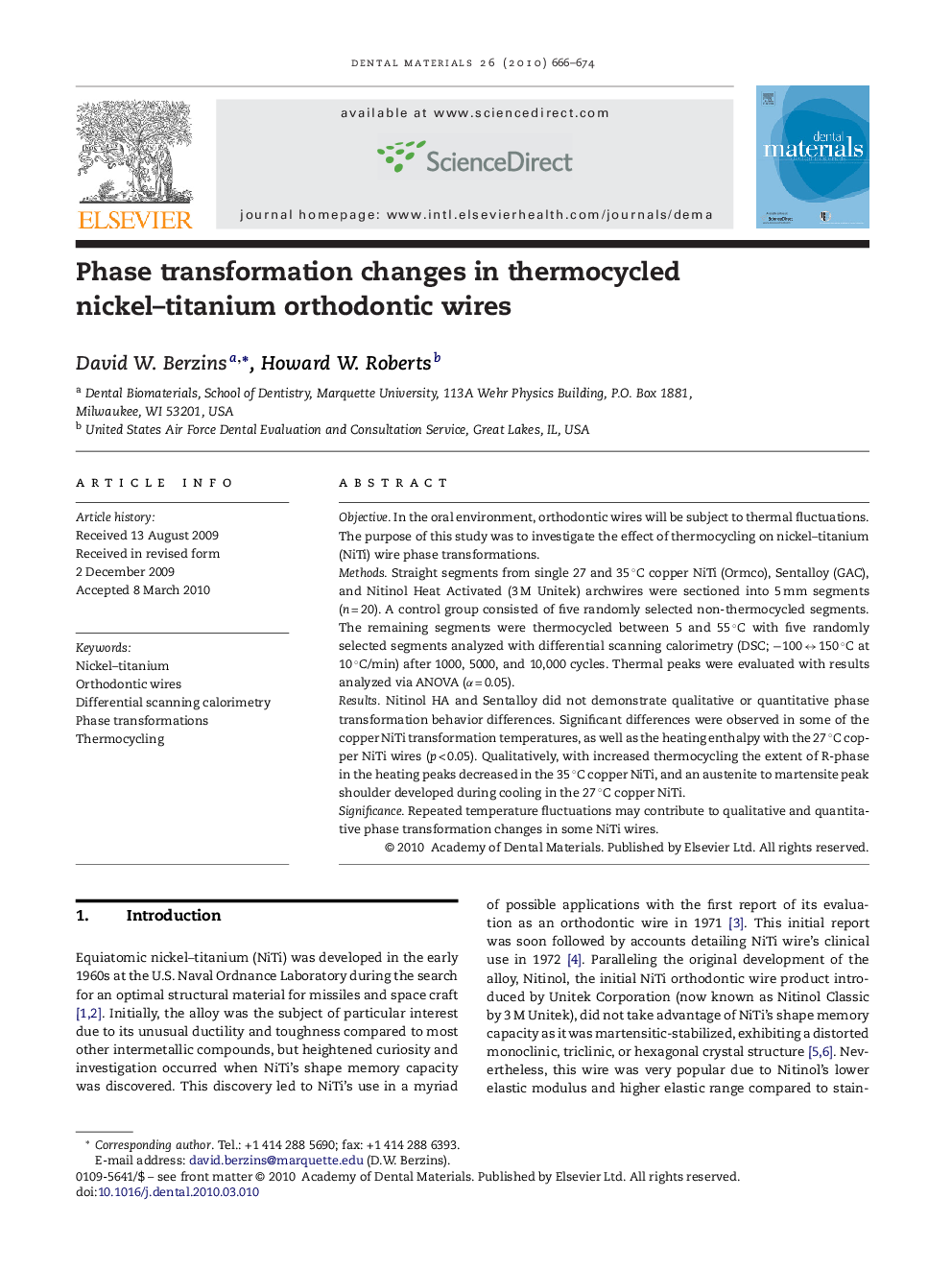| Article ID | Journal | Published Year | Pages | File Type |
|---|---|---|---|---|
| 1422722 | Dental Materials | 2010 | 9 Pages |
ObjectiveIn the oral environment, orthodontic wires will be subject to thermal fluctuations. The purpose of this study was to investigate the effect of thermocycling on nickel–titanium (NiTi) wire phase transformations.MethodsStraight segments from single 27 and 35 °C copper NiTi (Ormco), Sentalloy (GAC), and Nitinol Heat Activated (3 M Unitek) archwires were sectioned into 5 mm segments (n = 20). A control group consisted of five randomly selected non-thermocycled segments. The remaining segments were thermocycled between 5 and 55 °C with five randomly selected segments analyzed with differential scanning calorimetry (DSC; −100 ↔ 150 °C at 10 °C/min) after 1000, 5000, and 10,000 cycles. Thermal peaks were evaluated with results analyzed via ANOVA (α = 0.05).ResultsNitinol HA and Sentalloy did not demonstrate qualitative or quantitative phase transformation behavior differences. Significant differences were observed in some of the copper NiTi transformation temperatures, as well as the heating enthalpy with the 27 °C copper NiTi wires (p < 0.05). Qualitatively, with increased thermocycling the extent of R-phase in the heating peaks decreased in the 35 °C copper NiTi, and an austenite to martensite peak shoulder developed during cooling in the 27 °C copper NiTi.SignificanceRepeated temperature fluctuations may contribute to qualitative and quantitative phase transformation changes in some NiTi wires.
